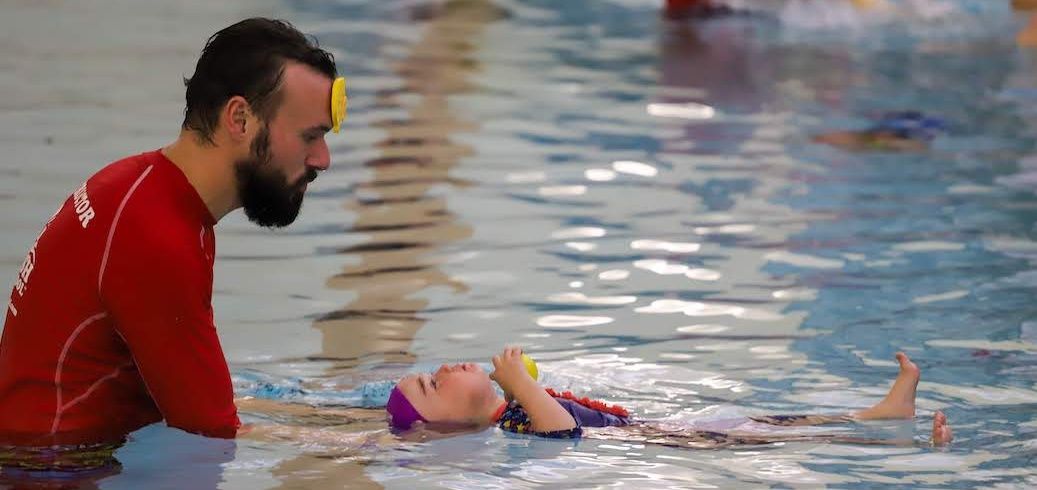
Oftentimes, we are asked what is so unique about British Swim School Hamilton County compared to the many learn-to-swim programs in the area. A few parents who have transferred have seen, first-hand, the difference between a traditional swim program and our swim survival program, but for those of you who are new to swim lessons, it’s important to understand the difference.
During lessons, you will often see your child learning to float on his or her back. Some days, you’re probably tired of watching your child float on his or her back. But this is the foundation of survival. If your child only knows how to do strokes or swim underwater, what happens if he or she is in distress, gets tired and no one is around to help? Traditional swim programs may teach treading water (and so do we… after core survival skills have been taught), but we all know that treading water is exhausting, and it won’t help if you’re already out of energy.
Back floating, or “starfish,’ is a low energy way to stay above water for an extended period of time. It’s that extra time that will allow a child to either rest then continue to swim or call for help. Aside from following basic rules around the pool (no running, climbing in the safe way, etc.), this is the key to water safety. This is what makes British Swim School so different.
You’ll hear a lot of parents who have tried other programs say, “My child can swim, but she can’t float.” It is our mission to teach your child to float and, ultimately, survive. Unfortunately, accidents do happen, and British Swim School wants every student to have the tools they need for a positive outcome.





